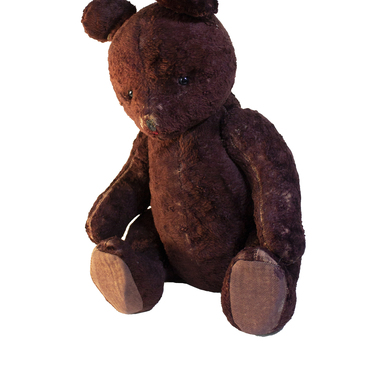The image of the Holy Mother has been known since the first century AD. She was portrayed in many ways in different cultures: in the Roman Empire, there were fresco paintings; in the Byzantine Empire, mosaics were made; icons were painted in Ancient Russia; and in Europe, the image of the Holy Mother is often found as sculptures.
Development of the sculpture in Europe at the beginning of the 19th century was connected with influence of neoclassicism.
The museum’s exhibition features a bust “Our Lady of Sorrows” made of marble. The sculpture is a copy of the work of famous Italian sculptor Antonio Canova. Canova’s sculptures can be divided into three categories: heroic compositions, compositions of grace and grave monuments. Canova considered his main artistic principle to be the opposition of “living”, natural sculptures to classical “cold and lifeless” statues.
Canova graduated from the Venice Academy of Fine Arts, while still studying he received several awards and performed a number of sculptural works for local monasteries. In 1780, he went to Rome to study classical sculptures. Soon Canova began to receive his first commissions and after a while became a well-known artist. He received commissions from many aristocratic families and royal persons. Pope Pius VII made him the chief caretaker of all artistic monuments in his possessions. Napoleon Bonaparte invited Canova to Paris to make his own monument. After the fall of Napoleon, the sculptor helped to return to Rome the artistic valueables which had been taken by the emperor to France. As gratitude for this, Pius VII ordered his name to be inscribed in the Golden Book of the Capitol and awarded him with a title of Marquis of Ischia.
The copy of the original Canova’s bust displayed at the exhibition is made of white marble.
The strength and beauty of this material attracted great sculptors: Phidias, Polykleitos, Donatello, Michelangelo, Bernini. Marble was a favorite material of the Baroque sculptors.
The bust of the Holy Mother with her hands folded in a prayer gesture is mounted on a rectangular stand made of dark green granite. It has an inscription in Latin: Mater Dolorosa, which means “Our Lady of Sorrows”.
The sculpture came to the museum from a destroyed noble estate.
Development of the sculpture in Europe at the beginning of the 19th century was connected with influence of neoclassicism.
The museum’s exhibition features a bust “Our Lady of Sorrows” made of marble. The sculpture is a copy of the work of famous Italian sculptor Antonio Canova. Canova’s sculptures can be divided into three categories: heroic compositions, compositions of grace and grave monuments. Canova considered his main artistic principle to be the opposition of “living”, natural sculptures to classical “cold and lifeless” statues.
Canova graduated from the Venice Academy of Fine Arts, while still studying he received several awards and performed a number of sculptural works for local monasteries. In 1780, he went to Rome to study classical sculptures. Soon Canova began to receive his first commissions and after a while became a well-known artist. He received commissions from many aristocratic families and royal persons. Pope Pius VII made him the chief caretaker of all artistic monuments in his possessions. Napoleon Bonaparte invited Canova to Paris to make his own monument. After the fall of Napoleon, the sculptor helped to return to Rome the artistic valueables which had been taken by the emperor to France. As gratitude for this, Pius VII ordered his name to be inscribed in the Golden Book of the Capitol and awarded him with a title of Marquis of Ischia.
The copy of the original Canova’s bust displayed at the exhibition is made of white marble.
The strength and beauty of this material attracted great sculptors: Phidias, Polykleitos, Donatello, Michelangelo, Bernini. Marble was a favorite material of the Baroque sculptors.
The bust of the Holy Mother with her hands folded in a prayer gesture is mounted on a rectangular stand made of dark green granite. It has an inscription in Latin: Mater Dolorosa, which means “Our Lady of Sorrows”.
The sculpture came to the museum from a destroyed noble estate.



